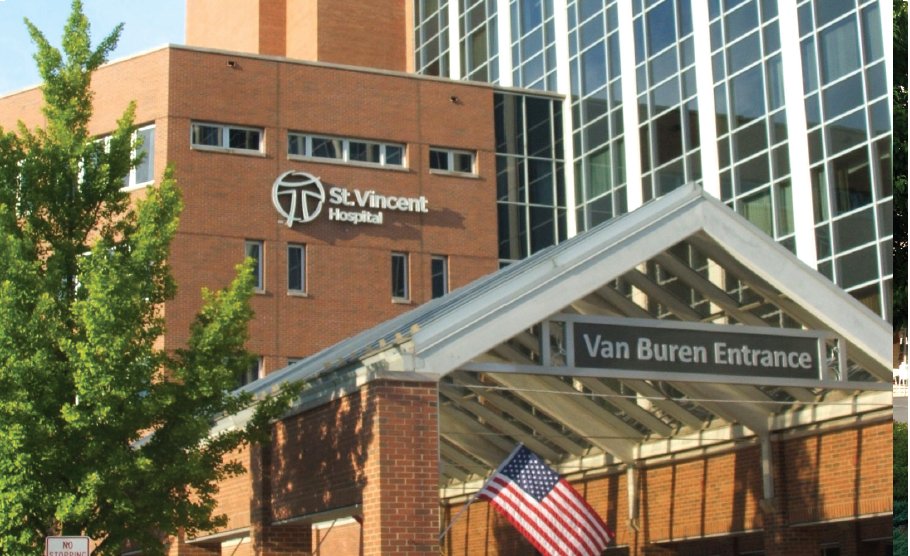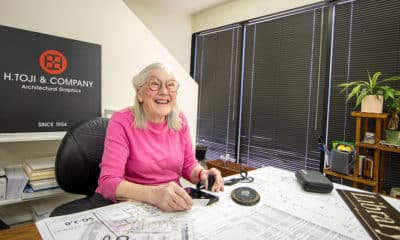ADA Signs
Healthcare Boom Boosts Sign Industry
Consolidation, mergers and a shifting marketplace expand signage needs.
Published
7 years agoon

Sign companies are accustomed to serving a broad range of clients, but when the customer is a major healthcare provider, the project scope often includes hundreds of signs. In fact, rapid growth and structural changes within the health-care industry represent a boon to the on-premise sign industry, a trend that promises to continue in the future.
Healthcare in the US has become an economic juggernaut, experiencing much faster growth than the economy at large. In 2015, healthcare spending by the federal government totaled more than $3 trillion and accounted for more than 18% of the nation’s overall GDP. Looking forward, the International Monetary Fund’s 2015 World Economic Outlook Database forecasts that healthcare spending will grow at a rate of 6% per year during the next 10 years.
Additionally, changes occurring in the healthcare marketplace have placed greater emphasis on the costs and convenience of medical services. Besides helping boost the level of hospital construction and renovations, shifting market demands have increasingly spurred construction of community-based outpatient facilities, many of which serve as satellite treatment centers for large, urban hospitals. Like their parent facilities, each of these neighborhood clinics has significant needs for identification and wayfinding signage.
The St. Vincent story
Take the Hospital Sisters Health System (HSHS) St. Vincent Hospital in Green Bay, WI, for example. It was founded in 1888 when Bishop Frederick Katzer penned a letter to the Sisters of the Third Order of St. Francis in Springfield, IL, requesting their help in founding a new hospital in Green Bay. The sisters’ determined efforts led directly to the opening of Green Bay’s first hospital in December of the same year in a 23-room house equipped only with modest resources. Building on this humble foundation for more than a century, today’s HSHS St. Vincent Hospital has become a thriving regional healthcare center with a staff of more than 2,200.
The hospital’s rich history and identity in the Green Bay community represented a focal point of design considerations in 2011 when the hospital initially contacted O’Connor Sign Planning & Design Ltd. (OSP&D; Oconomowoc, WI) seeking to upgrade existing signage. Cheryl O’Connor’s firm specializes in providing sign planning, wayfinding and sign design services for healthcare, educational and corporate facilities. OSP&D has been providing design services to the HSHS for nearly 30 years.
A central element in HSHS St. Vincent’s new signage is the custom grapevine icon, a biblical reference significant to the organization. Practicality also was a key consideration, as the hospital sought a signage system that could be changed as its needs evolve.
To initiate this process, HSHS St. Vincent contracted with OSP&D to perform a complete interior and exterior wayfinding assessment and develop a corresponding solution. OSP&D performed an exterior signage audit for HSHS St. Vincent, as well as for Bellin Hospital, a competing facility not affiliated with HSHS but sharing the same city block in Green Bay. This wayfinding audit assessed not only the hospitals’ existing signage, but also incorporated surveys of existing traffic signage, overhead street lighting, pavement markings, cross-walk locations/markings, landscaping, bus stops and typical traffic patterns.
They shared the findings with the City of Green Bay and, shortly after the review was completed, HSHS St. Vincent contracted with OSP&D to move forward with the exterior signage (Fig. 1). “During the course of our wayfinding study,” said O’Connor, “the hospital was rebranding its logo, which created an immediate need to implement the exterior signage package and also to address ongoing issues with the public’s ability to find the hospital’s emergency entrance [Fig. 2].” Why? Because HSHS St. Vincent’s main entrance and Bellin’s emergency entrance are both located on the same street; Bellin’s main entrance and HSHS St. Vincent’s emergency entrance also are both located on an adjacent street. OSP&D worked with the city to rewrite sign codes to meet the needs of both hospitals.
Colortech of Wisconsin Inc. (Green Bay) manufactured and installed the exterior signage designed by OSP&D. Mike Klaus coordinated the project for Color-tech. “St. Vincent Hospital is located in the Astor Park Historical District,” he said, “which meant meeting with members of the historical district organization and affected neighbors to affirm that this project would be beneficial to all parties. Although this permitting process spanned three years, installation of the entire project was to be completed within only 10 working days.”
APCO Architectural Sign Systems (Atlanta) manufactured the interior signage (Fig. 3 & 4), which was ordered after completion of the exterior sign package and was also installed by Colortech. HSHS St. Vincent requested that OSP&D apply the same design concepts developed for the exterior to achieve a consistent visual image and flow. But because of departmental name changes and floor remodeling in the hospital related to updated space planning, they completed a new interior signage study.
The HSHS St. Vincent Hospital project represents successful coordination among firms operating locally, regionally and nationally. “This project really was a collaborative effort,” said APCO’s Teresa Cox. “It emphasizes our capabilities to team with designers and local sign companies to provide the best combination of products and services.”
Signing a medical campus
Key aspects in planning architectural and wayfinding signage projects also come into play when once-separate facilities are combined via acquisitions and mergers, or when the physical site is a sprawling campus, as in the case of many university-affiliated medical centers. ID Signsystems (Rochester, NY) has developed a comprehensive system for such projects, which is reflected in signage the firm recently provided for Rochester Regional Health and the University of Rochester Medical Center (Fig. 5 & 6).
“A major part of the planning and design process crucial for ongoing system development is the creation of powerful guidelines,” said Steve Harroun, the firm’s director of wayfinding. “These documents profile every sign type, as well as the planning logic, color, material and modular system palette that grounds each element. Effective guidelines not only enforce consistency, they also make expanding the system far easier by ensuring that new additions fit well into the existing vocabulary.”
Reflecting on the fact that change has become endemic to the contemporary healthcare industry, Harroun said, “A strong planning process results in a wayfinding system that can survive the many changes and expansions that occur over time. The signage system must have a powerful, modular logic that extends beyond the signs them-selves to the management of new signs and alterations of existing signs.”
Choctaw clinic project
The additional signage opportunities stemming from the expansion of community outpatient facilities are exemplified by a recent project designed and manufactured by ASI Signage Innovations (Kenner, LA). ASI furnished colorful interior signage (Fig. 7 & 8) for the Mississippi Band of Choctaw Indians’ new outpatient facility which incorporates three floors, 35 treatment rooms, an emergency department and public health clinics.
“The wayfinding concept at Choctaw Health Center was enhanced through the use of digital imagery added to the modular sign system,” said ASI President Jim Bishop. “ASI/Louisiana, in conjunction with the client and Singleton Architects, selected photo-graphic images from the Choctaw Nation and coordinated a unique wayfinding concept by adding these images to the signs via print-on-panel technology. The images were organized into separate themes for each floor of the facility. Beadwork was designated for the first floor, basketry for the second floor and wooden handicrafts for the third floor. All of the objects photographed were individually produced by artisans living on the Choctaw lands. These items thus carried cultural elements of the Choctaw Nation throughout this project. The overhead department signage also includes secondary translations of English to Choctaw.”
Rising with the tide
Changes in today’s healthcare marketplace have spurred greater emphasis than ever before on the various elements influencing patients’ experience and overall satisfaction. Signage has become the calling card for progressive healthcare organizations nationwide, representing a principal focus in the branding and planning process for every medical facility, regardless of size or location.
SPONSORED VIDEO
Introducing the Sign Industry Podcast
The Sign Industry Podcast is a platform for every sign person out there — from the old-timers who bent neon and hand-lettered boats to those venturing into new technologies — we want to get their stories out for everyone to hear. Come join us and listen to stories, learn tricks or techniques, and get insights of what’s to come. We are the world’s second oldest profession. The folks who started the world’s oldest profession needed a sign.
You may like
Advertisement
Subscribe

Magazine
Get the most important news
and business ideas from Signsofthetimes Magazine.
Advertisement
Most Popular
-

 Tip Sheet2 days ago
Tip Sheet2 days agoAlways Brand Yourself and Wear Fewer Hats — Two of April’s Sign Tips
-

 Business Management1 week ago
Business Management1 week agoWhen Should Sign Companies Hire Salespeople or Fire Customers?
-

 Women in Signs1 week ago
Women in Signs1 week ago2024 Women in Signs Award Winners Excel in Diverse Roles
-

 Real Deal3 days ago
Real Deal3 days agoA Woman Sign Company Owner Confronts a Sexist Wholesaler
-

 Editor's Note7 days ago
Editor's Note7 days agoWhy We Still Need the Women in Signs Award
-

 Maggie Harlow2 weeks ago
Maggie Harlow2 weeks agoThe Surprising Value Complaints Bring to Your Sign Company
-

 Line Time1 week ago
Line Time1 week agoOne Less Thing to Do for Sign Customers
-

 Product Buying + Technology1 week ago
Product Buying + Technology1 week agoADA Signs and More Uses for Engraving Machines








